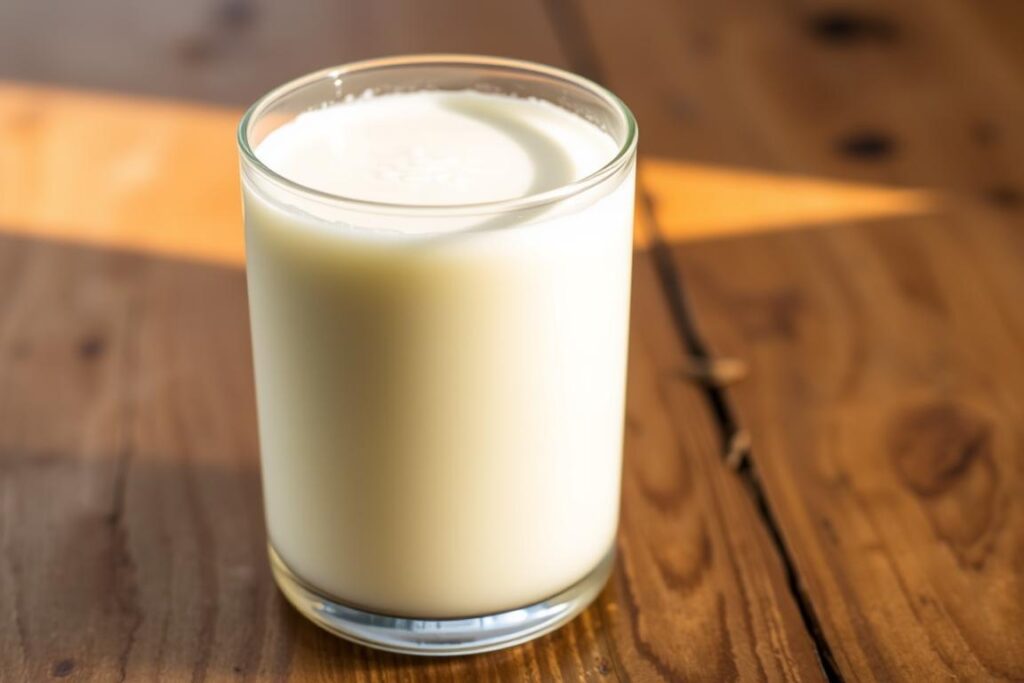Fermented foods for a healthy gut
Ein gesunder Darm ist das Fundament für unser allgemeines Wohlbefinden. Wusstest du, dass etwa 80% unseres Immunsystems im Darm lokalisiert sind? Eine ausgewogene Ernährung, reich an Nährstoffen, spielt dabei eine entscheidende Rolle.
Fermentierte Produkte wie Sauerkraut und Kimchi sind nicht nur lecker, sondern auch reich an Milchsäurebakterien, die deine Verdauung unterstützen und deine Darmgesundheit fördern.
Durch den Prozess der Fermentation werden die Nährstoffe in diesen Lebensmitteln besser verfügbar gemacht, was zu einer verbesserten Gesundheit beiträgt. In diesem Artikel erfährst du, wie du fermentierte Produkte in deinen Alltag integrieren kannst, um von ihren Vorteilen zu profitieren.
Die Kraft der Fermentation: Was steckt dahinter?
Die Fermentation ist ein uralter Prozess, der weit mehr ist als nur eine Methode zur Haltbarmachung von Lebensmitteln. Durch das Fermentieren kannst du Lebensmittel auf eine natürliche Weise konservieren und ihre gesundheitlichen Vorteile steigern. Schon seit Jahrhunderten wird dieser Prozess genutzt, um Nahrungsmittel haltbar zu machen und ihren Geschmack zu verbessern.
Ein wichtiger Aspekt der Fermentation ist der natürliche Prozess der Milchsäuregärung. „Die Milchsäuregärung ist ein mikrobiologischer Prozess, der die Haltbarkeit und den Geschmack von Lebensmitteln verbessert,“ erklärt ein Experte auf dem Gebiet.
Der natürliche Prozess der Milchsäuregärung
Bei der Milchsäuregärung werden Zucker durch Milchsäurebakterien in Milchsäure umgewandelt. Dieser Prozess senkt den pH-Wert des Lebensmittels, wodurch es für schädliche Mikroorganismen schwerer wird, sich zu vermehren. Das Ergebnis sind Lebensmittel, die nicht nur länger haltbar sind, sondern auch einen einzigartigen Geschmack und eine verbesserte Textur aufweisen.
Ein Beispiel dafür ist Sauerkraut, das durch die Fermentation von Weißkohl entsteht. Durch die Milchsäuregärung wird der Kohl haltbar gemacht und erhält seinen charakteristischen Geschmack.
Fermentation als traditionelle Konservierungsmethode
Die Fermentation wurde ursprünglich als Methode zur Haltbarmachung von Lebensmitteln entwickelt, besonders in Zeiten und Regionen, in denen Kühlung nicht verfügbar war. Du kannst dir vorstellen, wie wichtig diese Technik für unsere Vorfahren war, um Nahrungsmittel über den Winter oder auf langen Reisen haltbar zu machen.
In verschiedenen Kulturen weltweit haben sich unterschiedliche Fermentationstechniken entwickelt. Von Sauerkraut in Europa über Kimchi in Korea bis hin zu fermentierten Fischsaucen in Südostasien – die Vielfalt der fermentierten Produkte ist beeindruckend.
Heute schätzen wir fermentierte Produkte nicht mehr nur wegen ihrer Haltbarkeit, sondern vor allem wegen ihres einzigartigen Geschmacks und ihrer gesundheitlichen Vorteile. Durch das Fermentieren kannst du Lebensmittel ressourcenschonend konservieren, da keine Energie für Kühlung oder Erhitzung benötigt wird.
Warum fermentierte Lebensmittel deine Darmgesundheit fördern
Durch den Verzehr fermentierter Lebensmittel kannst du deine Darmgesundheit nachhaltig unterstützen. Fermentierte Lebensmittel enthalten eine Vielzahl von Nährstoffen und probiotischen Kulturen, die deine Verdauung stärken und deine Darmflora positiv beeinflussen.
Die Rolle der Milchsäurebakterien für deine Darmflora
Milchsäurebakterien spielen eine zentrale Rolle bei der Fermentation von Lebensmitteln. Sie sind nicht nur für die Konservierung und den Geschmack verantwortlich, sondern auch für die Förderung deiner Darmgesundheit. Diese Bakterien unterstützen die Balance deiner Darmflora, indem sie schädliche Bakterien hemmen und die Produktion von Vitaminen und anderen nützlichen Substanzen fördern.
Ein gesundes Gleichgewicht der Darmflora ist entscheidend für eine gute Verdauung und ein starkes Immunsystem. Durch den regelmäßigen Verzehr fermentierter Lebensmittel kannst du deine Darmflora stärken und somit deine allgemeine Gesundheit verbessern.
Bessere Nährstoffaufnahme durch Fermentation
Der Prozess der Fermentation macht Nährstoffe leichter zugänglich für deinen Körper. Durch die Fermentation werden komplexe Nährstoffe in einfachere Verbindungen aufgespalten, was als eine Art „Vorverdauung“ betrachtet werden kann. Dies erleichtert deinem Verdauungssystem die Arbeit und ermöglicht eine bessere Aufnahme von Nährstoffen.
Fermentierte Lebensmittel sind reich an Vitaminen, Mineralstoffen und sekundären Pflanzenstoffen. Die Fermentation kann sogar den Gehalt an bestimmten Vitaminen erhöhen, wie beispielsweise Vitamin C und B-Vitamine. Durch den Verzehr fermentierter Lebensmittel kannst du sicherstellen, dass du wichtige Nährstoffe aufnimmst, die für deine Gesundheit notwendig sind.
Sauerkraut: Der deutsche Klassiker unter den fermentierten Lebensmitteln

Wenn du nach einem einfachen Weg suchst, deine Ernährung zu verbessern, könnte Sauerkraut die Antwort sein. Sauerkraut ist ein traditionelles deutsches fermentiertes Lebensmittel, das nicht nur lecker, sondern auch sehr gesund ist.
Nährstoffprofil und gesundheitliche Vorteile
Sauerkraut ist reich an Vitaminen, insbesondere Vitamin C, und enthält eine Vielzahl von Milchsäurebakterien, die deine Darmgesundheit fördern. Durch die Fermentation wird das Gemüse nicht nur haltbar gemacht, sondern auch die Nährstoffaufnahme verbessert.
Die Milchsäurebakterien in Sauerkraut unterstützen eine gesunde Darmflora, was wiederum deine Immunabwehr stärken kann. Zudem ist Sauerkraut eine gute Quelle für Ballaststoffe, die deine Verdauung unterstützen.
Rohes vs. erhitztes Sauerkraut: Wichtige Unterschiede
Es gibt einen entscheidenden Unterschied zwischen rohem und erhitztem Sauerkraut, den du bei deiner Ernährung berücksichtigen solltest. Wenn du Sauerkraut kochst oder erhitzt, zerstörst du sowohl das hitzeempfindliche Vitamin C als auch die wertvollen Milchsäurebakterien, die für deine Darmgesundheit wichtig sind.
Rohes, unpasteurisiertes Sauerkraut aus dem Kühlregal oder selbst hergestellt bietet dir die meisten gesundheitlichen Vorteile, da es lebende Bakterienkulturen enthält. Du kannst selbst entscheiden, ob du Sauerkraut roh als Salat oder Beilage genießt oder es traditionell erwärmt servierst – je nachdem, ob dir der Geschmack oder die probiotische Wirkung wichtiger ist.
Kimchi: Das koreanische Superfood für deinen Darm
Wenn du deinen Darm stärken möchtest, solltest du Kimchi, ein traditionelles koreanisches fermentiertes Gemüse, in deinen Speiseplan aufnehmen.

Vielfältige Inhaltsstoffe und ihre Wirkung
Kimchi enthält eine Vielzahl von Inhaltsstoffen, die positive Auswirkungen auf deine Gesundheit haben. Durch die Fermentation werden die Nährstoffe im Gemüse aufgeschlossen, und die Milchsäurebakterien fördern eine gesunde Darmflora.
Die Kombination aus Chinakohl, Karotten, Frühlingszwiebeln, Knoblauch und Ingwer bietet eine breite Palette an Vitaminen, Mineralien und Antioxidantien.
Einfaches Rezept für selbstgemachtes Kimchi
Du kannst Kimchi leicht selbst herstellen und dabei die Schärfe und Gewürze nach deinem Geschmack anpassen. Für ein Grundrezept benötigst du Chinakohl, Karotten, Frühlingszwiebeln, Knoblauch, Ingwer, Chiliflocken, Fischsauce (oder Sojasauce für eine vegetarische Variante) und Salz.
Der Fermentationsprozess beginnt mit dem Einlegen des Chinakohls in Salzwasser, um ihn weich zu machen und erste Milchsäurebakterien zu aktivieren. Nach dem Abspülen und Abtropfen vermischst du den Kohl mit einer Paste aus den übrigen Zutaten und füllst alles in ein sauberes Glas.
Bei Raumtemperatur lässt du das Kimchi für 2-5 Tage fermentieren, bevor du es in den Kühlschrank stellst, wo es mehrere Monate haltbar ist.
Joghurt und Kefir: Fermentierte Milchprodukte im Vergleich
Wenn du nach fermentierten Milchprodukten suchst, sind Joghurt und Kefir zwei beliebte Optionen. Beide bieten eine Vielzahl von gesundheitlichen Vorteilen, insbesondere für die Darmgesundheit.
Probiotische Wirkung von Joghurt
Joghurt ist bekannt für seine probiotische Wirkung, die durch die Anwesenheit von Milchsäurebakterien wie Lactobacillus bulgaricus und Streptococcus thermophilus unterstützt wird. Diese Bakterien helfen, die Darmflora zu stärken und können somit zur Verbesserung der Verdauung beitragen.
Einige der Vorteile von Joghurt sind:
- Unterstützung der Darmgesundheit durch probiotische Bakterien
- Verbesserung der Verdauung
- Stärkung des Immunsystems
Kefir: Das kaukasische Wundergetränk
Kefir ist ein fermentiertes Milchgetränk, das aus dem Kaukasus stammt und durch die Verwendung von Kefirknöllchen hergestellt wird, die eine Symbiose aus Bakterien und Hefen darstellen. Kefir enthält eine Vielzahl von Mikroorganismen, darunter bis zu 150 verschiedene Arten von Bakterien und Hefen.

- Vielfältige Mikroorganismen für eine gesunde Darmflora
- Geringe Mengen Alkohol durch die Fermentation mit Hefen
- Besonders geeignet für Menschen mit Verdauungsproblemen
Du kannst von Kefir besonders profitieren, wenn du Probleme mit der Verdauung hast, da er durch die Vielfalt der Mikroorganismen eine besonders positive Wirkung auf die Darmflora haben kann.
Kombucha: Fermentierter Tee mit gesundheitlichem Mehrwert

Kombucha ist mehr als nur ein Trendgetränk; es bietet eine Vielzahl gesundheitlicher Vorteile. Dieses fermentierte Teegetränk hat seinen Ursprung im asiatischen Raum und ist bekannt für seine gesundheitsfördernden Eigenschaften.
Was ist ein Scoby und wie funktioniert er?
Ein Scoby (Symbiotic Culture of Bacteria and Yeast) ist eine symbiotische Kultur aus Bakterien und Hefen, die für die Fermentation von Kombucha verantwortlich ist. Durch die Fermentation entsteht ein Getränk, das reich an Probiotika und anderen gesundheitsfördernden Substanzen ist.
Vorsicht bei Alkoholgehalt und Eigenproduktion
Bei der Herstellung von Kombucha entsteht durch die Fermentation immer eine gewisse Menge Alkohol, die je nach Fermentationsdauer und -bedingungen zwischen 0,5% und 3% liegen kann. Wenn du Kombucha selbst herstellst, solltest du wissen, dass der Alkoholgehalt mit längerer Fermentationszeit zunimmt. Kommerziell hergestellter Kombucha wird oft so verarbeitet, dass der Alkoholgehalt unter 0,5% liegt.
Es ist wichtig, bei der Eigenproduktion auf absolute Hygiene zu achten, um eine Kontamination mit unerwünschten Mikroorganismen zu vermeiden. Außerdem solltest du bedenken, dass selbst hergestellter Kombucha Koffein aus dem verwendeten Tee enthält, was bei empfindlichen Personen zu Schlafstörungen führen kann, wenn er abends getrunken wird.
Asiatische Fermentationskunst: Miso und Tempeh
Durch Fermentation entstehen in der asiatischen Küche Produkte wie Miso und Tempeh, die reich an Nährstoffen und Geschmack sind. Diese fermentierten Lebensmittel bieten nicht nur eine Vielzahl von gesundheitlichen Vorteilen, sondern bereichern auch deine Gerichte mit ihrem einzigartigen Geschmack.

Miso: Die umami-reiche Würzpaste aus Japan
Miso ist eine traditionelle japanische Würzpaste, die durch die Fermentation von Sojabohnen, Reis oder Gerste hergestellt wird. Sie ist reich an Umami-Geschmack und bietet eine Vielzahl von gesundheitlichen Vorteilen, wie verbesserte Verdauung und ein gestärktes Immunsystem. Mit ihrem intensiven Geschmack kann Miso in vielen Gerichten verwendet werden, von Suppen bis hin zu Marinaden.
Du kannst Miso verwenden, um deinen Gerichten eine tiefe, reiche Note zu verleihen. Es ist ein vielseitiges Lebensmittel, das sowohl in der traditionellen japanischen Küche als auch in modernen Rezepten seinen Platz findet.
Tempeh: Proteinreiche Alternative aus Indonesien
Tempeh ist ein traditionelles indonesisches Fermentationsprodukt, bei dem gekochte Sojabohnen mit einem Edelschimmelpilz (Rhizopus oligosporus) fermentiert werden, wodurch ein fester, schnittfester Kuchen entsteht. Mit seinem nussigen, erdigen Geschmack und der festen Textur eignet sich Tempeh hervorragend als proteinreiche Alternative zu Fleisch in deiner Ernährung.
Du profitierst von dem hohen Proteingehalt (etwa 19g pro 100g) sowie wertvollen Nährstoffen wie Eisen, Calcium, Magnesium und B-Vitaminen, die durch die Fermentation besser verfügbar werden. Tempeh kann vielseitig zubereitet werden – mariniert und gebraten, gegrillt, gebacken oder zerkrümelt als Ersatz für Hackfleisch in verschiedenen Gerichten.
Sauerteig und Apfelessig: Vielseitige Helfer im Alltag
In der Welt der fermentierten Lebensmittel stechen Sauerteig und Apfelessig hervor, da sie sowohl kulinarisch als auch gesundheitlich wertvoll sind.

Sauerteigbrot: Bekömmlich und aromatisch
Sauerteigbrot ist nicht nur lecker, sondern auch bekömmlicher als herkömmliches Brot. Durch die Fermentation werden die Gluten besser aufgeschlossen, was es für viele Menschen leichter verdaulich macht.
Der Sauerteig entsteht durch die natürliche Fermentation von Mehl und Wasser, wobei Milchsäurebakterien eine wichtige Rolle spielen. Diese Bakterien produzieren Milchsäure, die dem Brot seinen charakteristischen Geschmack verleiht.
Apfelessig: Mehr als nur ein Würzmittel
Apfelessig ist ein vielseitiges Produkt, das nicht nur zum Würzen von Speisen verwendet werden kann. Er enthält Essigsäure, die antibakterielle Eigenschaften hat und somit als natürliches Konservierungsmittel dient.
Die „Essigmutter,“ die sich in hochwertigem Apfelessig findet, ist ein Zeichen für eine natürliche Herstellung und enthält wertvolle Bakterienkulturen. Apfelessig kann auch zur Unterstützung der Verdauung und als Hautpflegeprodukt verwendet werden.
Regelmäßig eingenommen, kann Apfelessig deinen Stoffwechsel anregen und möglicherweise zur Regulierung des Blutzuckerspiegels beitragen.
Fermentierte Lebensmittel selbst herstellen: Grundlagen und Tipps
Die Kunst der Fermentation ermöglicht es dir, gesunde Lebensmittel zu genießen und gleichzeitig deine Kochkünste zu erweitern. Fermentierte Lebensmittel sind nicht nur lecker, sondern bieten auch zahlreiche gesundheitliche Vorteile, insbesondere für deine Darmgesundheit.
Das richtige Equipment für die Heimfermentation
Um erfolgreich zu fermentieren, benötigst du das richtige Equipment. Glasbehälter sind ideal, da sie leicht zu reinigen sind und du den Fermentationsprozess gut beobachten kannst. Achte darauf, dass deine Gefäße, Werkzeuge und Hände sauber sind, um unerwünschte Keime zu vermeiden.
Ein weiterer wichtiger Aspekt ist die Verwendung von Salz. Die empfohlene Menge liegt bei etwa 2% Salz, da dies unerwünschte Bakterien hemmt und die Milchsäuregärung fördert.
Häufige Fehler vermeiden
Beim Fermentieren zu Hause können einige typische Fehler auftreten, die du jedoch leicht vermeiden kannst. Stelle sicher, dass dein Gemüse vollständig von Flüssigkeit bedeckt ist, da Teile, die mit Luft in Kontakt kommen, schimmeln können. Verwende Gewichte, um das Gemüse unter der Oberfläche zu halten.
- Achte auf Hygiene, um unerwünschte Keime zu vermeiden.
- Verwende die richtige Menge Salz, um die Milchsäuregärung zu fördern.
- Beobachte den Fermentationsprozess regelmäßig und reagiere auf Anzeichen wie gewölbte Deckel oder weiße Ablagerungen.
- Entsorge die Fermentation, wenn du Schimmel oder fauligen Geruch bemerkst.
Durch die Beachtung dieser Tipps kannst du gesunde fermentierte Lebensmittel herstellen und deine Ernährung bereichern.
So integrierst du fermentierte Lebensmittel in deinen Speiseplan
Durch die Aufnahme von fermentierten Lebensmitteln in deine tägliche Ernährung kannst du deine Darmflora stärken und dein Wohlbefinden steigern. Fermentierte Lebensmittel wie Sauerkraut, Kimchi, Joghurt und Kefir sind reich an probiotischen Mikroorganismen, die deine Verdauung unterstützen.
Um die gesundheitlichen Vorteile optimal zu nutzen, solltest du fermentierte Lebensmittel regelmäßig und in kleinen Mengen konsumieren. Beginne mit kleinen Portionen, besonders wenn deine Verdauung empfindlich ist. Ein Esslöffel Sauerkraut oder ein Glas Kefir täglich ist ein guter Anfang.
Du kannst fermentierte Lebensmittel vielseitig in deine Mahlzeiten einbauen. Sie dienen als leckere Beilage, als Zutat in Suppen und Dressings oder als gesundes Frühstück. Wichtig ist, dass du sie roh oder nach dem Kochen zu deinen Gerichten hinzufügst, um die lebenden Mikroorganismen zu erhalten.
Eine Kombination verschiedener fermentierter Lebensmittel fördert die Vielfalt deiner Darmflora und kann sich positiv auf deine Verdauung und dein allgemeines Wohlbefinden auswirken. Probiere verschiedene Optionen aus und finde heraus, was dir am besten schmeckt.






